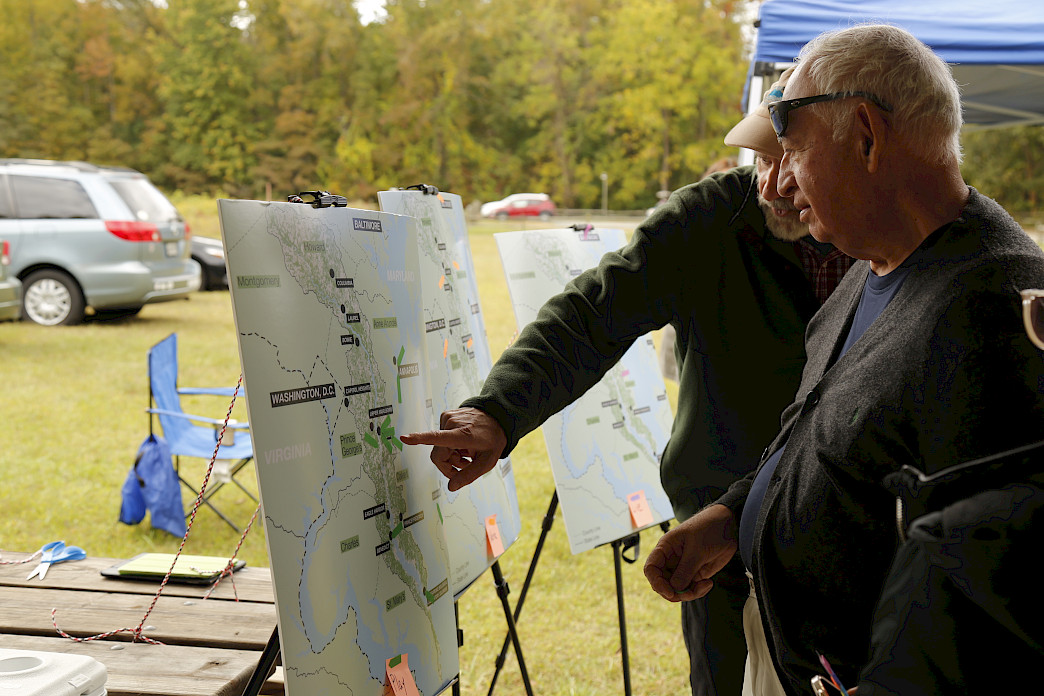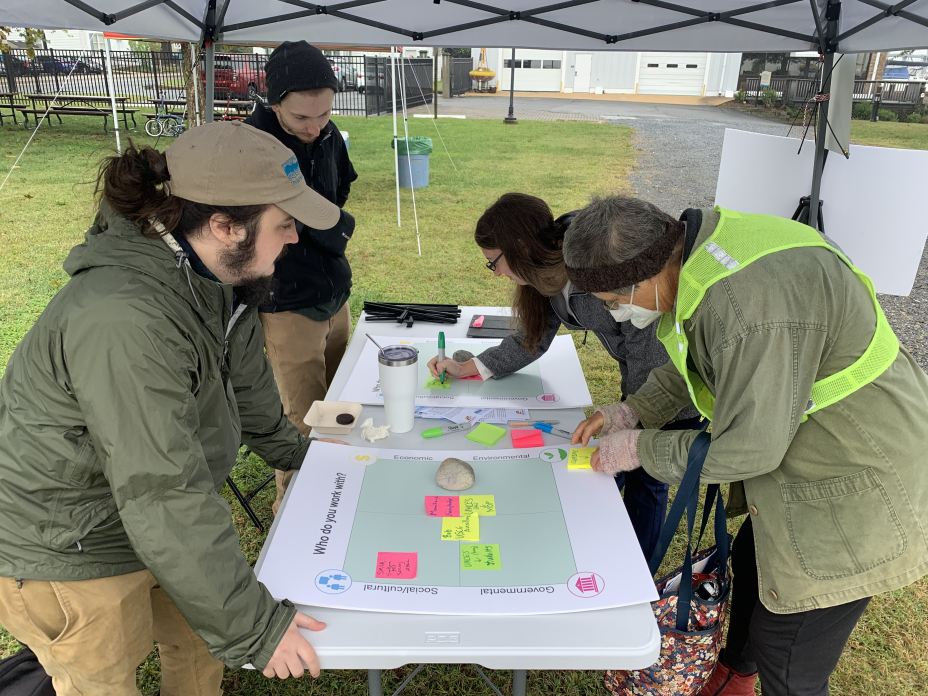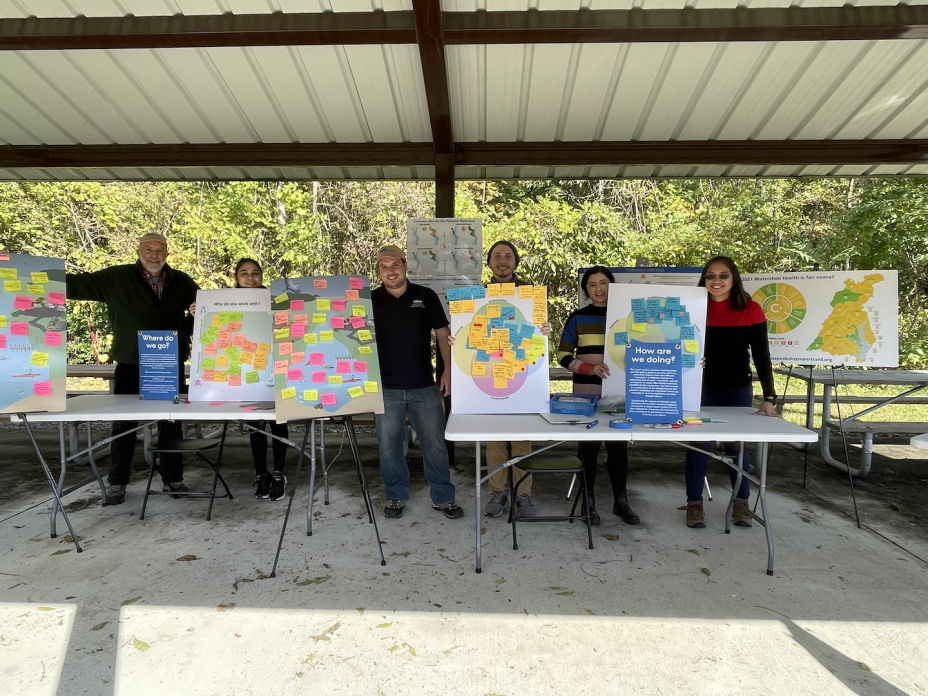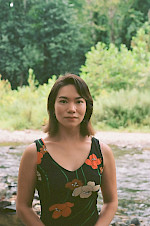Bringing People Together for the Patuxent River
Ann Foo, Lili Badri ·In early October, UMCES IAN hosted two Patuxent Stakeholder Listening Sessions as part of Phase 1 of developing a Patuxent River and Watershed Socio-environmental Report Card. These sessions were held within the Patuxent Watershed, at the Chesapeake Biological Laboratory on October 5 and Jug Bay Wetlands Sanctuary on October 8.
Our hope is that the Patuxent River Report Card will serve as a megaphone for issues facing the watershed today. The first step towards this goal is to develop a shared understanding of the Patuxent and a vision for its future.

Chesapeake Biological Laboratory (CBL), established in 1925, is a research campus located on Solomons Island, and Jug Bay Wetlands Sanctuary (JBWS) is 1,700 acres of protected land used for recreational, research, and educational purposes. At JBWS, the weather was sunny and agreeable, but at CBL, the Stakeholder Listening Session was held in the wake of Hurricane Ian, and the day was predictably blustery and rainy. Our tents and tables were set up just off the water and we had plenty of seagulls to keep us company before opening. Faculty, cyclists, and passers-by, in raincoats and in windbreakers, all answered questions and gave their input about the Patuxent Watershed. Plenty of visitors arriving at Jug Bay just for a day of recreation stopped by our stations too!
At our first station, we asked participants to mark on maps of the watershed where they live, work, and play. It’s important to see how people interact with the watershed and surrounding area, and it gives people an opportunity to discuss with others what matters to them. We found that people were enthusiastic about recreation all along the Patuxent.

Next, we asked participants to submit some attributes that they value about the Patuxent, and some attributes that they think are threats to it. People heavily valued recreation, wildlife, and the ecosystem, and concurred that the major threats were climate change, pollution, and development. People were troubled by litter and light pollution, and concerned about the lack of awareness of the watershed’s issues. The importance of the Patuxent’s clean water, habitat for native plants, and history were noted as well.
In order to glean concrete information about the Patuxent, we need to identify indicators, which we research and grade for the report card. The report card needs to answer questions that people in the watershed have in order to be a relevant resource. To that end, participants were asked to share governmental, economic, environmental, and social/cultural indicators that they thought would help track conditions along the Patuxent. As we research and develop these indicators, we’ll find the answers to people’s questions: Can we swim here? Is this park accessible? Is the land and water protected by the government? Is it resistant to flooding? Are cultural and historical sites being preserved and visited? Is there sufficient funding to maintain the parks?

In addition to identifying specific indicators, participants had a chance to identify who they currently work with and who they desire to work with as a part of expanding their social network and allowing us to identify stakeholders that we could work with on the project. Many attendees worked with governmental institutions, environmental groups, academics, students, and seniors. Youth groups, schools, faith communities, and farmers were among those our participants wanted to form connections with.
The Listening Session was then closed out with a final activity where participants could express their vision for the Patuxent Watershed and the actions they believe could be taken to achieve that vision. A sustainable Patuxent will require efforts from many different people and institutions, and people working in the watershed made it clear that increasing public awareness of the river’s condition and issues was important to them. People suggested hands-on actions like trash clean-ups, as well as systemic changes to zoning laws and agricultural practices. We hope that knowing the common goals and values of everyone we spoke with, and sharing that information with them, will help spark collaborative, coordinated action to preserve, protect, and improve the Patuxent for a long time to come.

We would like to extend a thank you to all who came out to participate and to our staff for making the events possible. We would also like to thank our project collaborators at the Maryland Department of Planning and the Patuxent River Commission.
About the authors
Ann Foo

Ann is a new Science Communicator at UMCES. She graduated from the University of Maryland, College Park, with a B.S. in Cell Biology and Genetics and a B.A. in Classical Languages and Literatures. Ann previously did research on foodborne pathogens and on the gut microbiome. Ann has a cat named Toast and enjoys cooking, listening to podcasts, and going to museums.
Lili Badri

Lili is a Senior Science Communicator at the University of Maryland Center for Environmental Science’s Integration and Application Network (IAN). Her work at IAN focuses on the synthesis and dissemination of scientific information through data analysis, visualization, and stakeholder engagement. She collaborates within and across disciplines to develop accessible communication products that support evidence-based decision-making. Her professional interests include enhancing science communication practices and understanding community perspectives to support sustainable and informed environmental solutions. She earned a Master's degree in Environmental Science at SUNY ESF and a Bachelor's degree in Chemistry at the University of South Alabama. Her previous research focused broadly on lab and field analysis of dissolved organic matter characterization and dynamics. Her personal interests include gardening, reading, and cooking.

